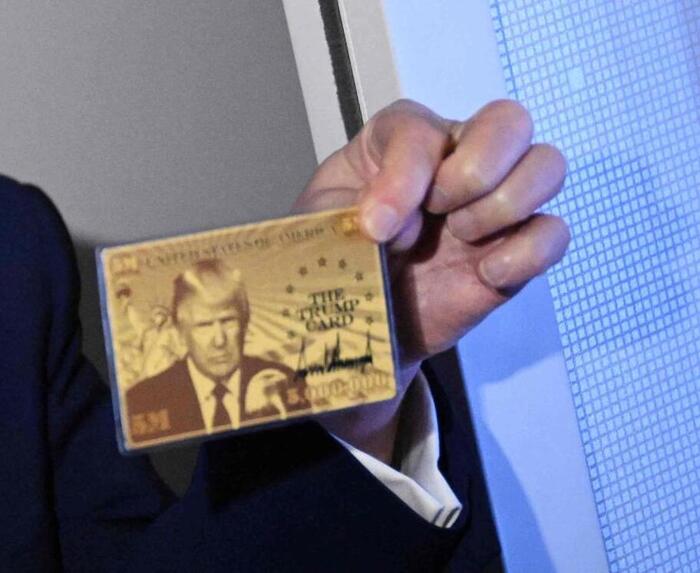The new visa program, called the “Trump Card,” is attracting international interest: over 68,000 people from around the world have already registered to obtain legal residence in the US with a minimum investment of 5 million dollars. The initiative is promoted by Commerce Secretary Howard Lutnick, with the ambitious goal of raising up to 1 trillion dollars for the federal Treasury. The plan, presented as a renewed and enhanced version of its predecessor, the EB-5 program, aims to become the new preferred pathway for foreign entrepreneurs.
The EB-5 package, in place since 1990, offered permanent residence in exchange for investments ranging from $900,000 to $1,8 million. In 2023 alone, around 14,000 visas of this type were granted. The new Gold Card, however, targets much higher numbers: the issuance of tens of thousands of cards is expected already during the summer, with a final goal of reaching 200,000.
The official website, trumpcard.gov, launched only a few days ago, displays an image of the golden card, decorated with Trump’s likeness, the Statue of Liberty, an eagle, and the American flag, and promises to be made of gold (though this is disputed by other sources); it will grant exclusive access to those able to invest. According to Lutnick himself, the card will represent a symbol of prestige as well as a legal instrument. He also explained that the GOP leader cares deeply about the aesthetics of the operation, believing that such a significant investment deserves something “beautiful and iconic.” However, critics have mocked the design as self-promotional and unserious, that it resembles a credit card more than a government document, raising questions about its legitimacy.
The initiative is rooted in an idea by financier John Paulson, a major Trump supporter, who proposed this scheme as a response to the growing American public debt, now at 36 trillion dollars. According to Lutnick, the new authorization would be particularly attractive for companies and capitalists seeking to obtain residence. Nevertheless, analysts question whether there’s enough demand to make the program financially meaningful. At $5 million per card, the target audience is extremely narrow, and many wealthy individuals may not see the U.S. as an attractive investment given current political tensions. Lutnick confirmed that during his recent trip to the Middle East, accompanying the president, he presented the Card to representatives from Saudi Arabia, Qatar, and the United Arab Emirates.
However, several issues remain unresolved. The White House still needs to establish the tax policies reserved for those who will obtain the document, and it is unclear whether citizens of certain countries will be excluded from applying. Currently, entry to the U.S. is banned for individuals from a dozen nations, and additional restrictions are reportedly under consideration. The vetting of applicants, according to early reports, is expected to be entrusted to the Departments of Homeland Security, State, and Commerce.
The rollout coincides with increased immigration raids and militarized displays, leading some to view the Gold Card as a gilded distraction from more aggressive enforcement policies.












